Each of the last two weekends, I have left the friendly confines of Gangnam and traveled north of the Han River to explore Gwanghwamun, and I may very well go back next weekend. There is always so much to see—maybe too much.
What is this place, which extends from City Hall in the south to the entrance of Gyeongbok Palace in the north? It has parallels such as Tahrir Square (Cairo), Tiananmen Square (Beijing), Lafayette Park 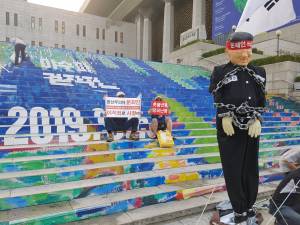 (Washington), Trafalgar Square (London) and the Zocalo (Mexico City). Going back a bit further in time, I could mention the Greek Agora and the Roman Forum. Each, to some degree, is or was the very core of the city, where triumphal marches took place, speeches were given, clashes occurred and mundane governmental functions carried out.
(Washington), Trafalgar Square (London) and the Zocalo (Mexico City). Going back a bit further in time, I could mention the Greek Agora and the Roman Forum. Each, to some degree, is or was the very core of the city, where triumphal marches took place, speeches were given, clashes occurred and mundane governmental functions carried out.
Some of them may be said to have spiritual significance. I have seen photographs and artistic renderings of Gwangwhamun in times past—the Park Chung-Hee era, the North Korean flag being paraded up and down the avenue on June 28, 1950, the heady days after liberation in 1945, the late 19th century when Korea was so lethargic and vulnerable, and stately processions of kings going back to Taejo—and ponder what it has meant to this country for 600-plus years.
On my recent visits, I saw more than the familiar statues of Sejong the Great and Yi Sun-shin. I saw people waving the taegukki and the stars and stripes, people handing out leaflets, people begging for signatures on their petitions and people using megaphones to state their (mostly right-wing) political views. I saw banners urging the U.S. Army to get out and banners urging it to stay. I saw a tussle 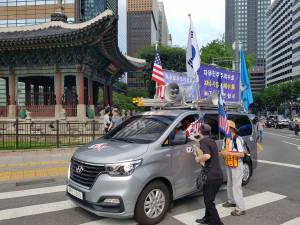 between some anti-Moon Jae-in protesters and people advocating for the victims of the Sewol ferry disaster, with the police attempting to mediate. I saw a man holding a poster of President Moon in which he was made to look evil and demonic. Another called Moon a communist and, believe it or not, urged him to commit suicide! One man stood across from the American Embassy and held a sign demanding that Chinese influence in Korea, both North and South, stop. I saw a tent full of people proclaiming that former President Park Geun-hye should be released from captivity. I also saw a placard with Biblical citations saying that Communism is destined to be eradicated. Yet another insisted that President Donald Trump resume the U.S.-South Korea military exercises that so upset Kim Jong-un. On a more innocent matter, I saw Korean kids playing in the water fountains under the watchful gaze of Admiral Yi.
between some anti-Moon Jae-in protesters and people advocating for the victims of the Sewol ferry disaster, with the police attempting to mediate. I saw a man holding a poster of President Moon in which he was made to look evil and demonic. Another called Moon a communist and, believe it or not, urged him to commit suicide! One man stood across from the American Embassy and held a sign demanding that Chinese influence in Korea, both North and South, stop. I saw a tent full of people proclaiming that former President Park Geun-hye should be released from captivity. I also saw a placard with Biblical citations saying that Communism is destined to be eradicated. Yet another insisted that President Donald Trump resume the U.S.-South Korea military exercises that so upset Kim Jong-un. On a more innocent matter, I saw Korean kids playing in the water fountains under the watchful gaze of Admiral Yi.
I came to Gwanghwamun for another reason, having read in the Korea Times and other media outlets that this most important area is due for major changes. Sometime in 2021, the number of traffic lanes 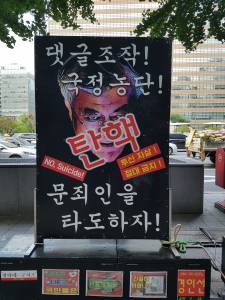 will be reduced to six—all on the east side of the plaza. According to Seoul City Government and the Cultural Heritage Administration, it will be more pedestrian-friendly. I do not have room to list every alteration, but there will be many.
will be reduced to six—all on the east side of the plaza. According to Seoul City Government and the Cultural Heritage Administration, it will be more pedestrian-friendly. I do not have room to list every alteration, but there will be many.
In Korea, things often are not what they seem, so I am skeptical. Is this truly necessary? What is the reason? Is it to make Gwanghwamun less of a center for rallies and protests? Leftists liked it a few years ago when they were holding candle-light demonstrations against President Park. Now, it seems, the right-wingers predominate.
Critics say the $88 million project—surely that number will rise—is Seoul Mayor Park Won-soon’s attempt to do something dramatic and springboard himself to the Blue House. This is essentially what Lee Myung-bak did with Cheonggyecheon (final price tag: $900 million), and sure enough he won the 2008 election. But I bridle at any comparison of Gwanghwamun and Cheonggyecheon. As much as I enjoy the latter today, it is just a stream; Gwangwhamun, by contrast, has enormous significance and should be treated with the utmost care.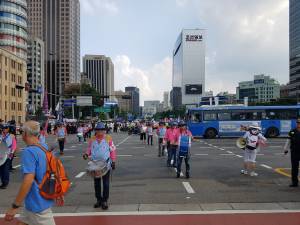
I would also ask why the CHA supports the Gwanghwamun re-do. After all, the agency was in favor of the last major revision, in 2008 and 2009. If these changes are such a good idea, why were they not implemented a decade ago?
There is one aspect of the plan that I strongly support—rebuilding Woldae, a 36,000-square-meter plaza at the entrance of Gyeongbok Palace. This is where countless events took place before the detested Japanese Government-General Building was erected in the 1920s. It, mercifully, was razed in 1995 and 1996. I want to see Gwanghwamun as historically authentic as possible given the constraints of modern times. But as Nam Eunkyung of the Citizens’ Coalition for Economic Justice and Hwang Pyung-woo of the Korea Cultural Heritage Policy Institute have said, the plan has been done with unseemly haste. A lot of “experts” weighed in, but too few citizens.

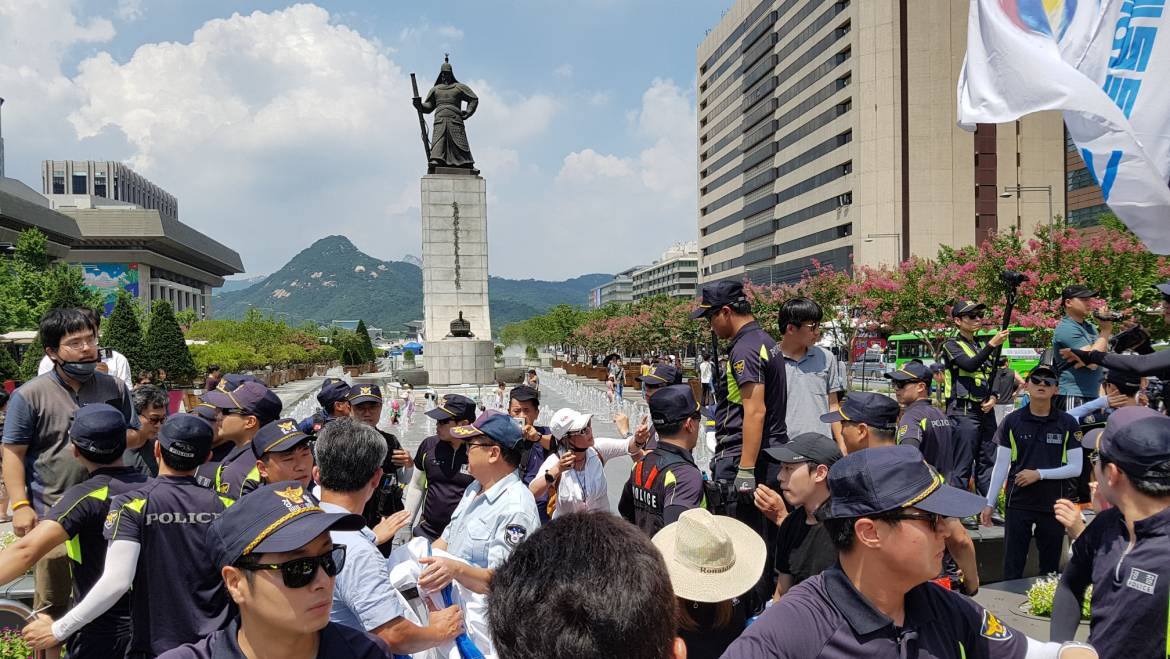
4 Comments
Gwanghwamoon bears a significance to me as a place where I witnessed the Korean people bring down a dictator in 1997 and an incompetent leader in 2016.
In 1997 the plaza was full of tear gas, people chanting slogans, riot police running away from the angry demonstrators, however in 2016 it was full of bright songs, messages of hope and victory. Of course, there have been people who refused to share what most Korean people hoped for in our recent history and now they occupy the plaza to voice their political agenda ignored by most passers-by some of whom the incompetent presidents’ supporters pick on a fight. This is such an irony in history.
I don’t know where you got Seoul city mayor Park’s motivation behind the plan to renovate the plaza; however, I agree that a plan like this needs as many citizens’ participation in its early drafting stage.
Tim, I certainly appreciate you reading and offering a Korean perspective. As for the mayor of Seoul and his motivation, I merely stated that it is a possibility. Such things cannot be proven.
Richard-Thanks for the interesting article. I knew nothing of the subject but I enjoyed getting more insights about Korea, including Tim’s comment as well. Cheers, Kevin
Kevin, it looks like we have been presented with a fait accompli…the decision-makers have decided what they will do with Gwanghwamun.
Add Comment